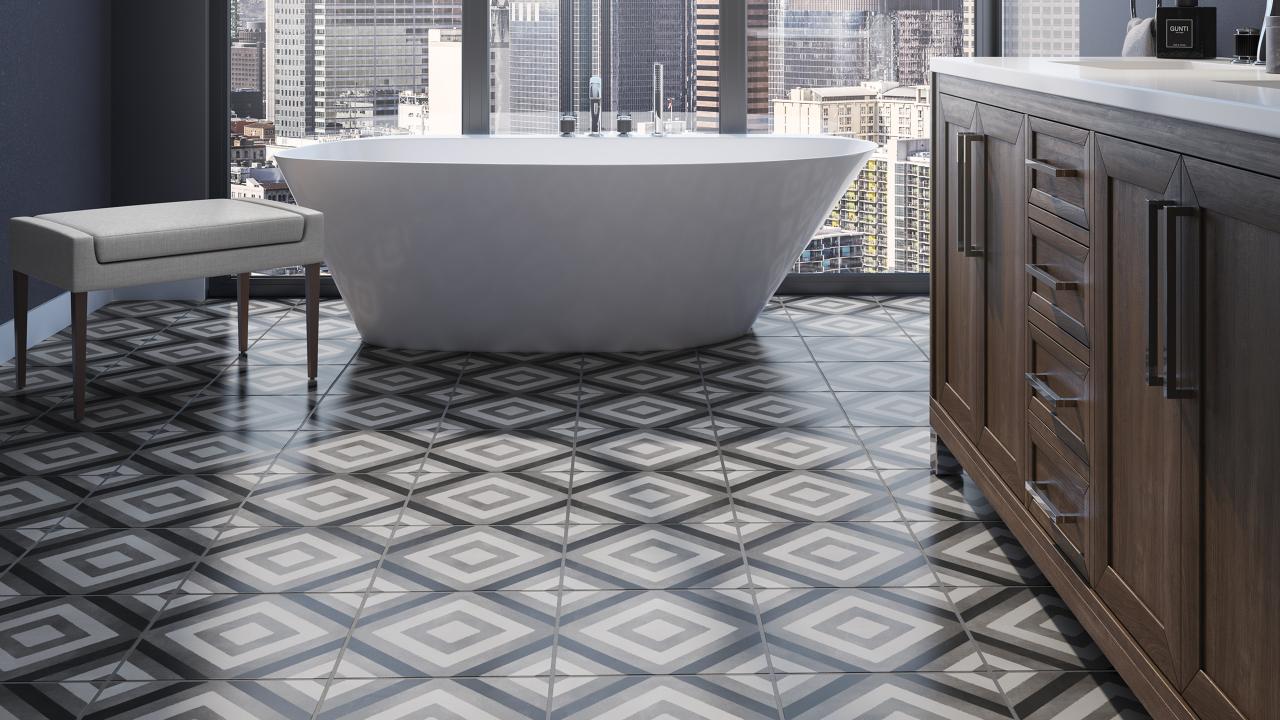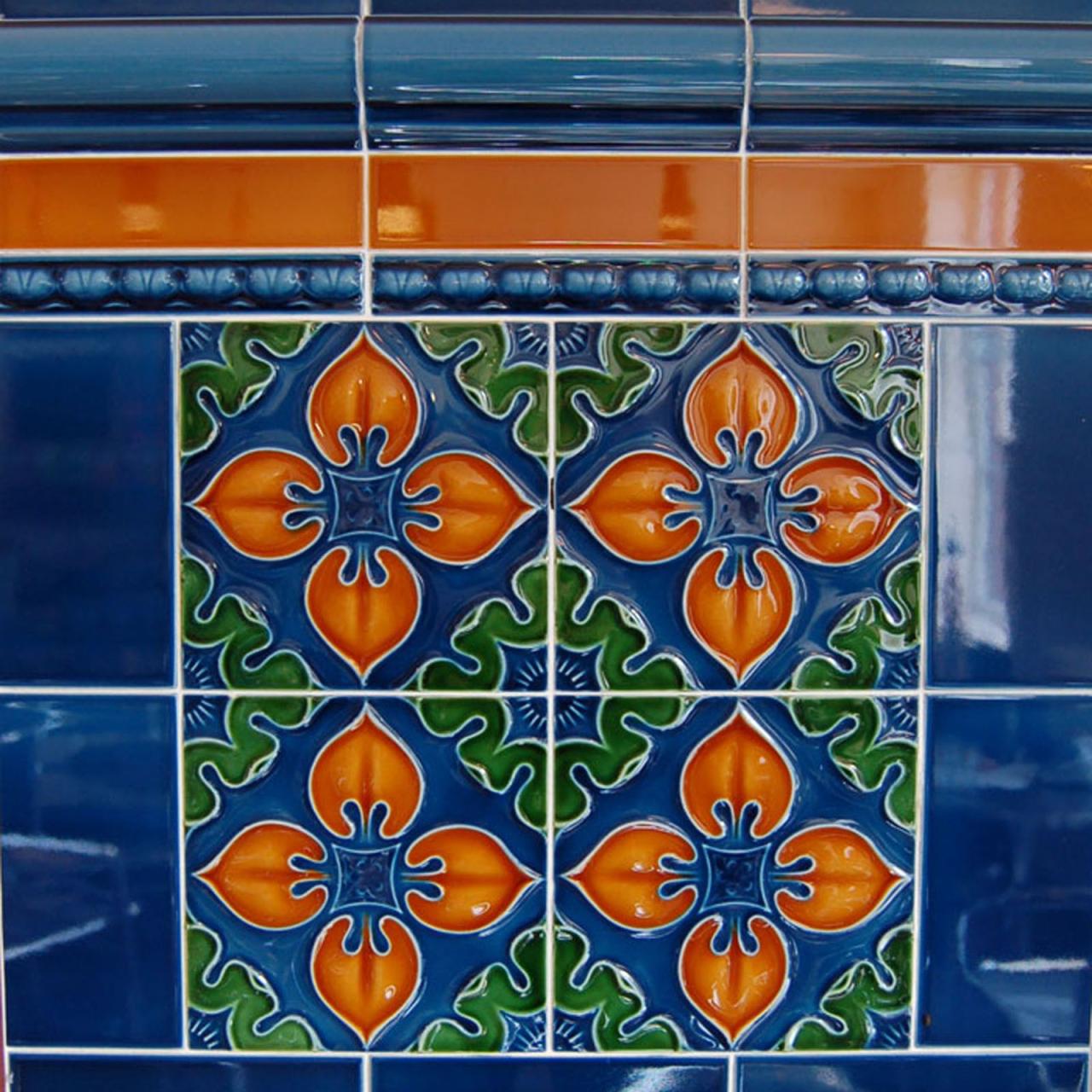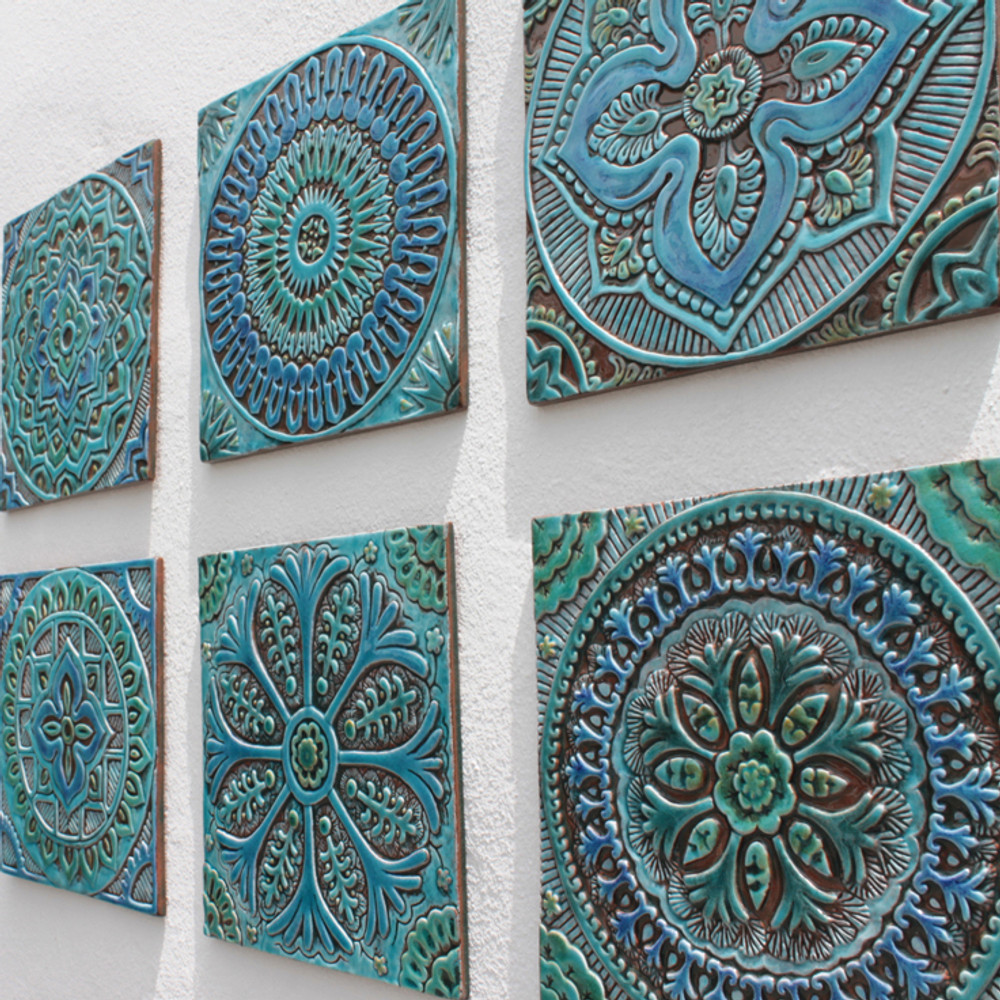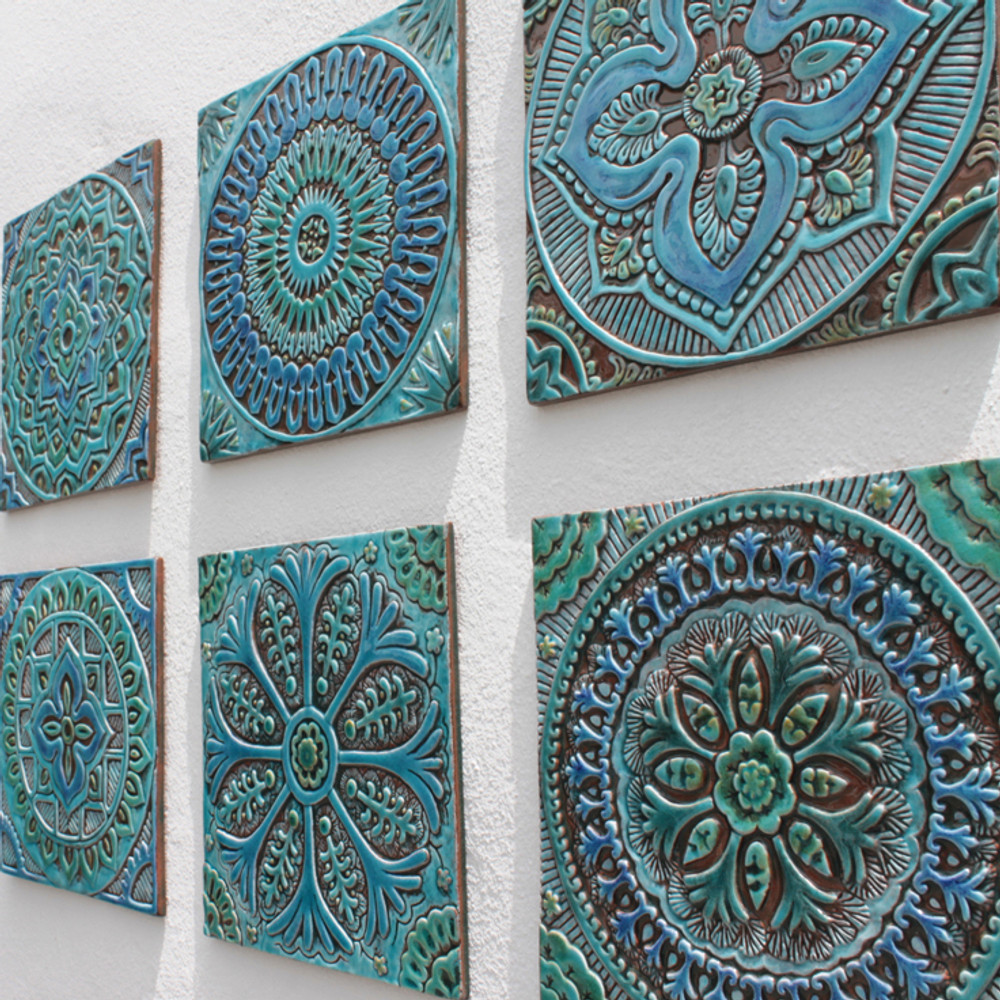Welcome to the captivating world of decorative tiles, where art and functionality harmoniously intertwine. From ancient origins to contemporary designs, these intricate adornments have played a pivotal role in shaping architectural and interior aesthetics across cultures and time periods.
As we delve into the rich history, materials, and applications of decorative tiles, prepare to be inspired by their timeless beauty and versatility. Join us on a journey of discovery as we explore the intricate designs, innovative techniques, and enduring appeal of these captivating ceramic masterpieces.
History and Origin of Decorative Tiles

The art of decorative tiling has a rich and ancient history, with origins dating back to the earliest civilizations. The use of tiles for both functional and decorative purposes has been documented in various cultures across the globe.
The earliest known decorative tiles were created in Mesopotamia around 3500 BCE. These tiles were made of clay and often featured geometric patterns or simple designs. Over time, the use of tiles spread to other regions, including Egypt, Greece, and Rome.
In each culture, tiles evolved to reflect the local artistic traditions and architectural styles.
Cultural Influences on Tile Design
The cultural influences on tile design are vast and varied. In the Middle East, tiles were often used to create intricate mosaics that depicted religious scenes or geometric patterns. In China, tiles were used to decorate temples and palaces, and often featured vibrant colors and detailed designs.
In Europe, tiles were used in a variety of architectural settings, from churches to castles, and often incorporated elements of Gothic, Renaissance, and Baroque styles.
Geographical Influences on Tile Design
The geographical influences on tile design are also significant. The availability of local materials and the climate of a region often played a role in the development of tile designs. For example, in regions with abundant clay, tiles were often made of this material.
In areas with cold climates, tiles were often glazed to protect them from the elements.
Design Elements and Patterns: Decorative Tiles
Decorative tiles showcase a diverse range of design elements and patterns that contribute to their aesthetic appeal. These elements, including motifs, borders, and color palettes, create visual interest and reflect different artistic styles and cultural influences.
Motifs, Decorative tiles
- Motifs are recurring decorative elements that often hold symbolic or cultural significance. Common motifs found in decorative tiles include geometric shapes, floral patterns, animals, and human figures.
- Geometric motifs, such as stars, hexagons, and chevrons, add a sense of order and symmetry to tile designs.
- Floral motifs, inspired by nature, bring a touch of elegance and organic beauty to tiles.
- Animal motifs, depicting creatures from the real world or mythical realms, add a playful or exotic touch to tile designs.
- Human figure motifs, often depicting scenes from mythology or everyday life, add a narrative element to decorative tiles.
Borders
- Borders frame the edges of decorative tiles and enhance their overall design. They can vary in width, color, and pattern, adding a decorative accent to the tile.
- Simple borders, such as plain lines or geometric patterns, provide a subtle frame for the tile’s main design.
- Ornate borders, featuring intricate patterns, scrolls, or floral motifs, add a touch of grandeur to decorative tiles.
- Contrasting borders, using colors or patterns that differ from the main tile design, create a striking visual effect.
Color Palettes
- Color palettes in decorative tiles range from vibrant and eye-catching to subtle and understated.
- Monochromatic color schemes, using different shades of a single color, create a sophisticated and elegant look.
- Analogous color schemes, using colors adjacent to each other on the color wheel, provide a harmonious and cohesive design.
- Complementary color schemes, using colors opposite each other on the color wheel, create a striking and dynamic effect.
- Neutral color palettes, featuring shades of white, gray, or beige, provide a timeless and versatile backdrop for other decorative elements.
Trends and Innovations

The world of decorative tiles is constantly evolving, with new trends and innovations emerging all the time. Advancements in manufacturing and design are pushing the boundaries of what’s possible, resulting in tiles that are more beautiful, durable, and versatile than ever before.
One of the most significant trends in recent years is the rise of digital printing technology. This technology allows manufacturers to create tiles with incredibly detailed and realistic designs, including photographs, artwork, and even custom patterns. Digital printing has also made it possible to produce tiles in a wider range of colors and finishes, giving designers more freedom to express their creativity.
Emerging Technologies
Another major trend is the development of new materials for tiles. These materials include porcelain, ceramic, glass, and even metal. Each material has its own unique properties, such as durability, water resistance, and heat resistance. This allows designers to choose the perfect material for each application, whether it’s a bathroom, kitchen, or outdoor space.
Advancements in Manufacturing
Advancements in manufacturing have also had a major impact on the tile industry. New technologies have made it possible to produce tiles more efficiently and with less waste. This has led to lower prices for tiles, making them more affordable for homeowners and businesses.
Maintenance and Preservation

Maintaining the beauty and longevity of decorative tiles requires proper care and attention. Regular cleaning and periodic maintenance can help preserve their aesthetic appeal and functionality.
Cleaning Techniques
* Use a soft cloth or sponge:Avoid abrasive materials that can scratch or damage the tile surface.
Mild cleaning solutions
Use a pH-neutral cleaning solution specifically designed for tiles. Avoid harsh chemicals or acidic cleaners.
Wipe in the direction of the grout lines
This helps prevent dirt and debris from accumulating in the grout.
Rinse thoroughly
Use clean water to remove any cleaning residue.
Preservation Strategies
* Sealants:Applying a penetrating or topical sealant can protect tiles from stains and moisture damage.
Grout maintenance
Regularly inspect and repair any damaged grout to prevent water penetration.
Avoid heavy objects
Do not place heavy objects on tiles, as this can cause cracking or breakage.
Use protective mats
Place mats under furniture legs or heavy appliances to protect tiles from scratches or indentations.
Regular inspections
Periodically inspect tiles for any signs of damage or wear. Prompt repairs can prevent further deterioration.By following these maintenance and preservation techniques, you can ensure that your decorative tiles remain beautiful and functional for many years to come.
Wrap-Up
In conclusion, decorative tiles stand as a testament to human creativity and craftsmanship. Their ability to transform ordinary spaces into extraordinary ones is undeniable. As we continue to embrace new trends and technologies, the future of decorative tiles promises even more exciting possibilities.
Let us celebrate the enduring legacy of these artistic wonders and continue to incorporate their beauty and functionality into our living spaces.
FAQ Corner
What are the most durable materials used in decorative tiles?
Porcelain and glass tiles are known for their exceptional durability and resistance to wear and tear.
How can I clean decorative tiles effectively?
Regular cleaning with a mild detergent and warm water is sufficient for most decorative tiles. Avoid using abrasive cleaners or harsh chemicals.
Can decorative tiles be used outdoors?
Yes, certain types of decorative tiles, such as porcelain or glazed ceramic tiles, are suitable for outdoor use as they can withstand weather conditions.

